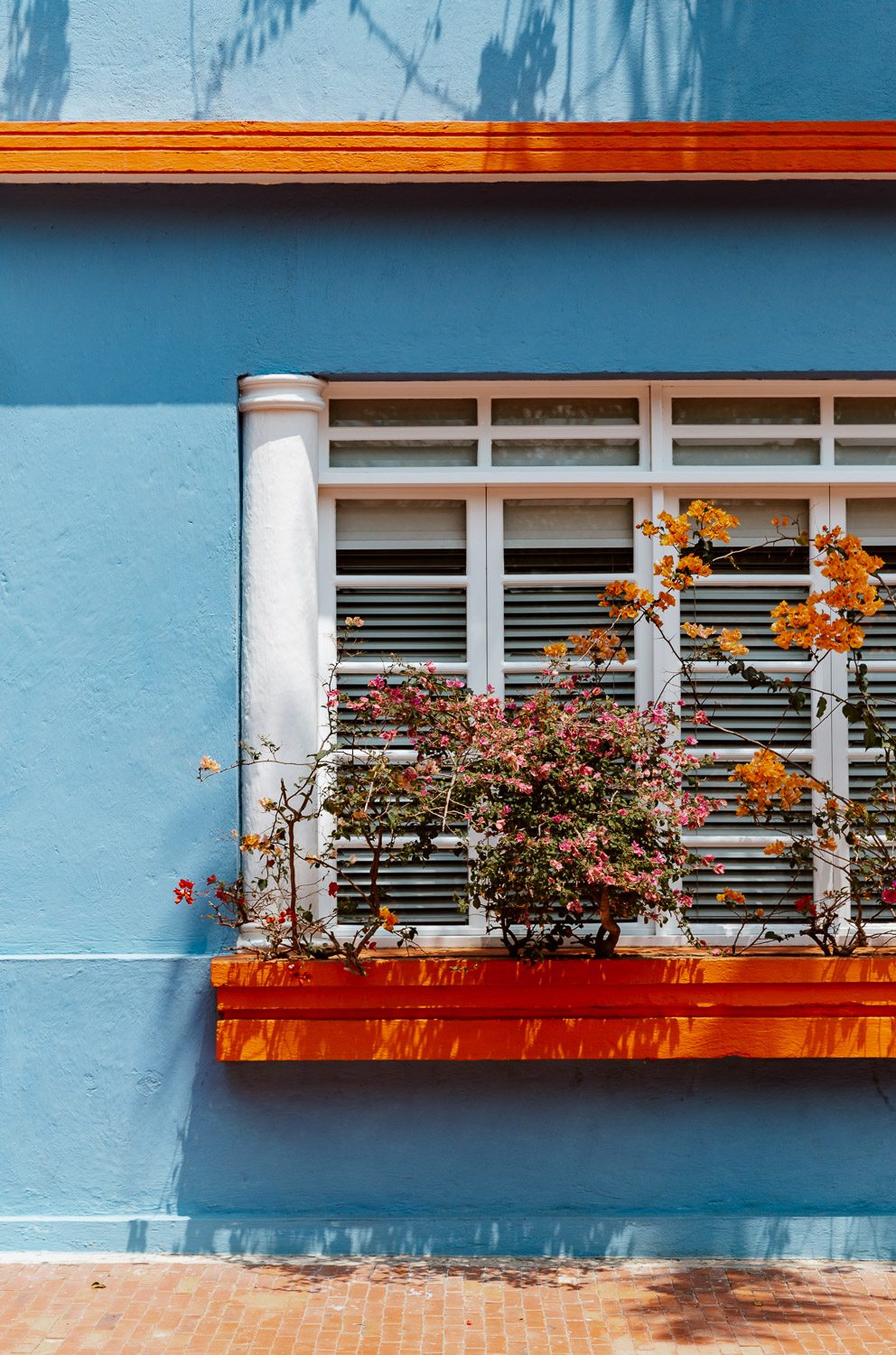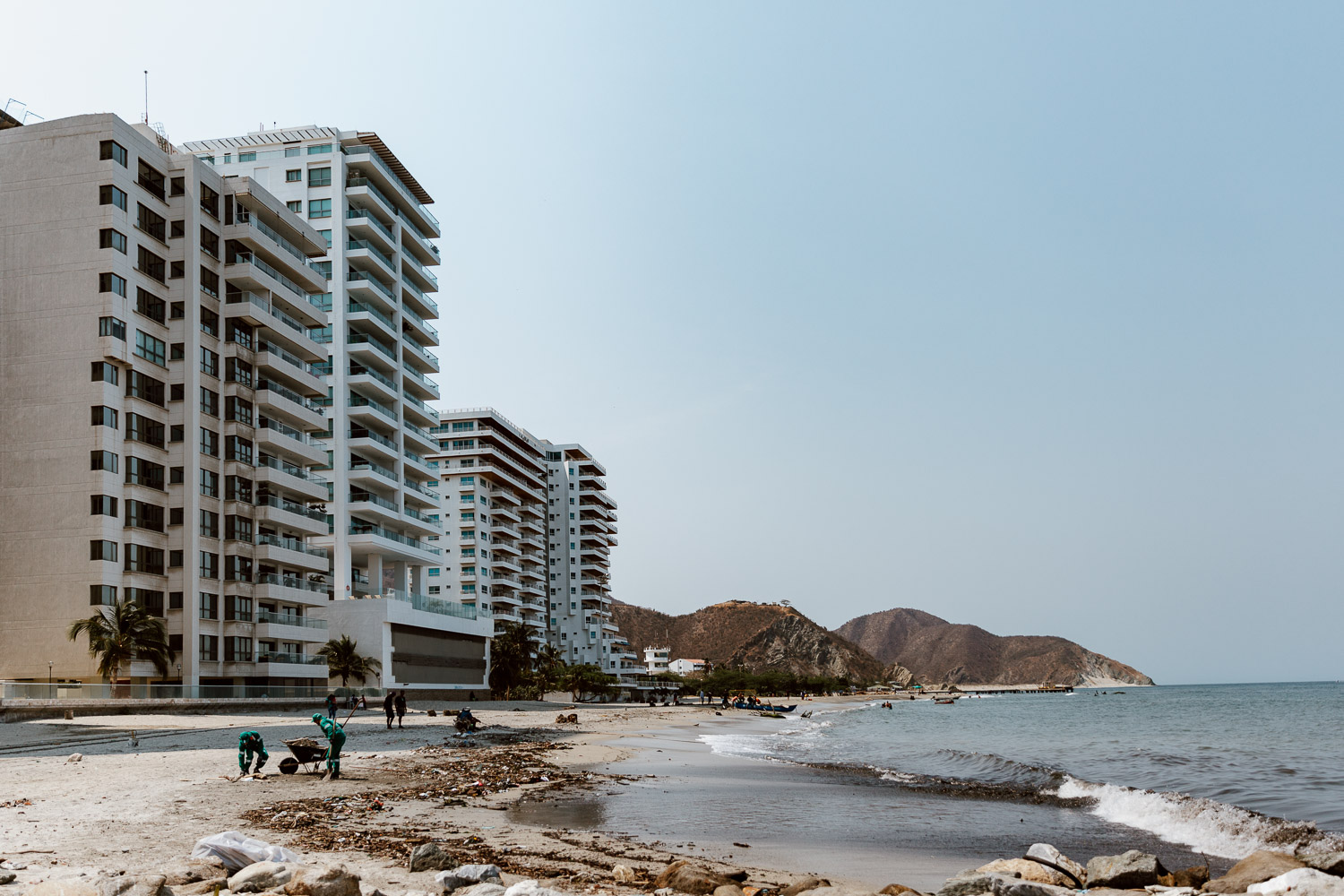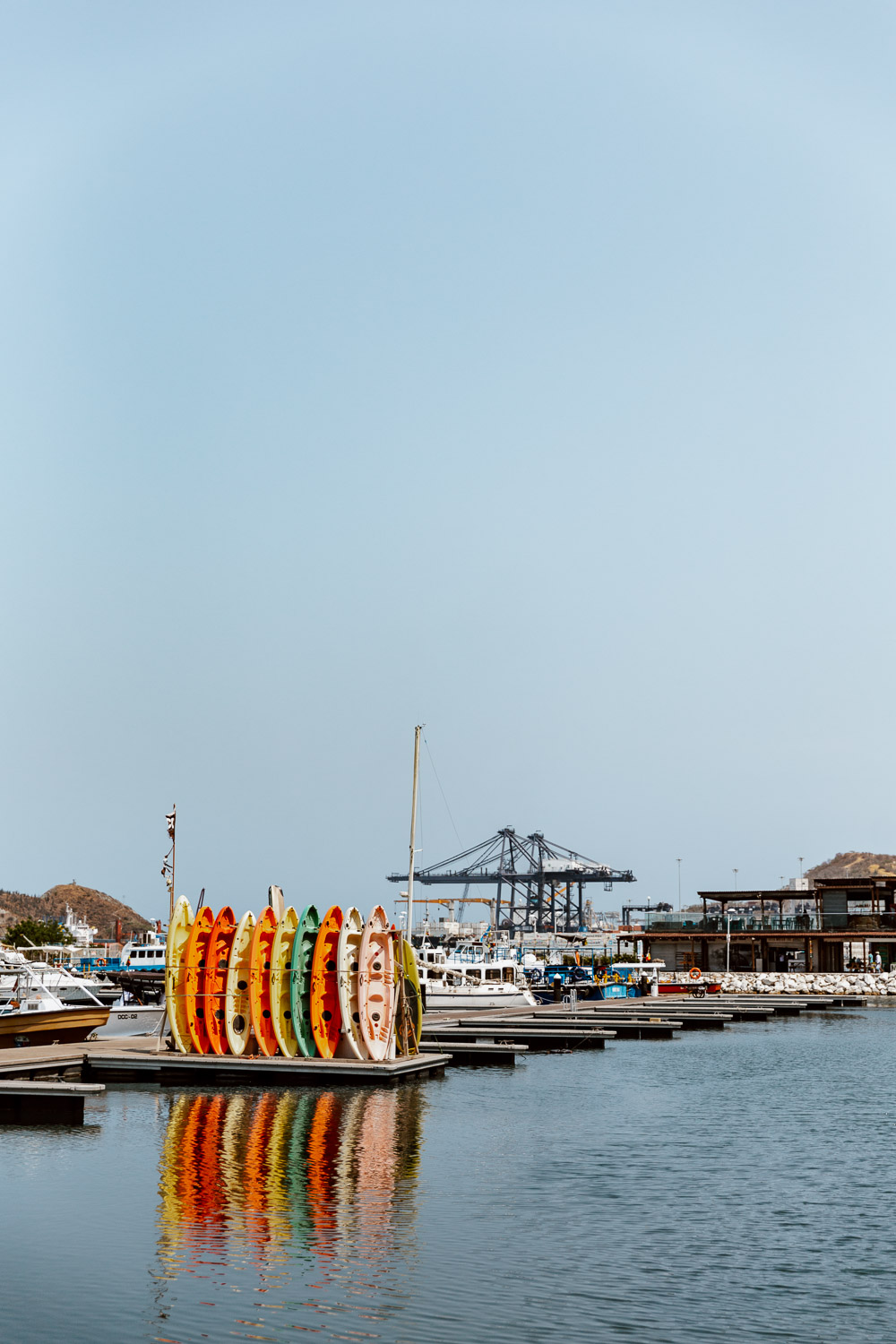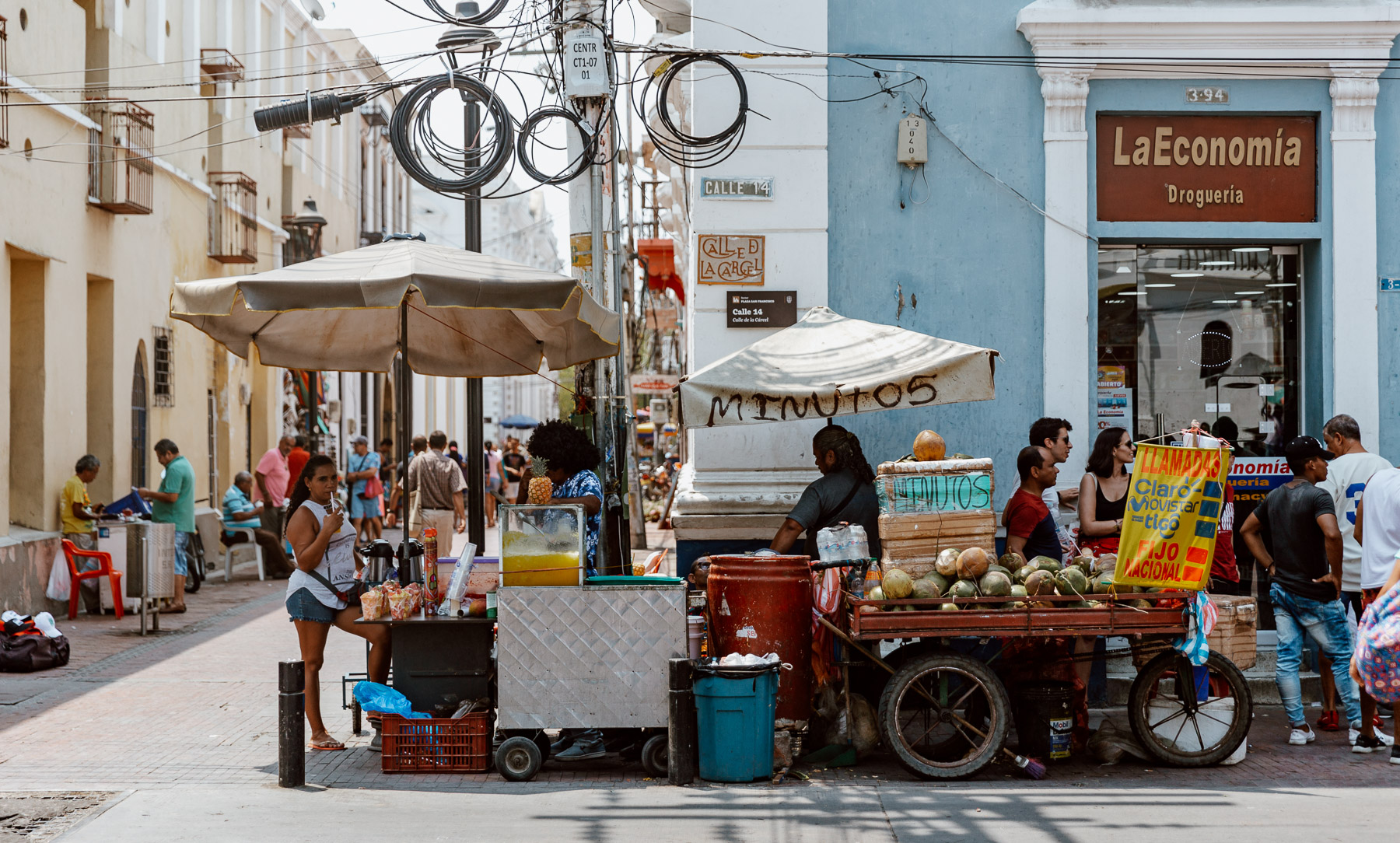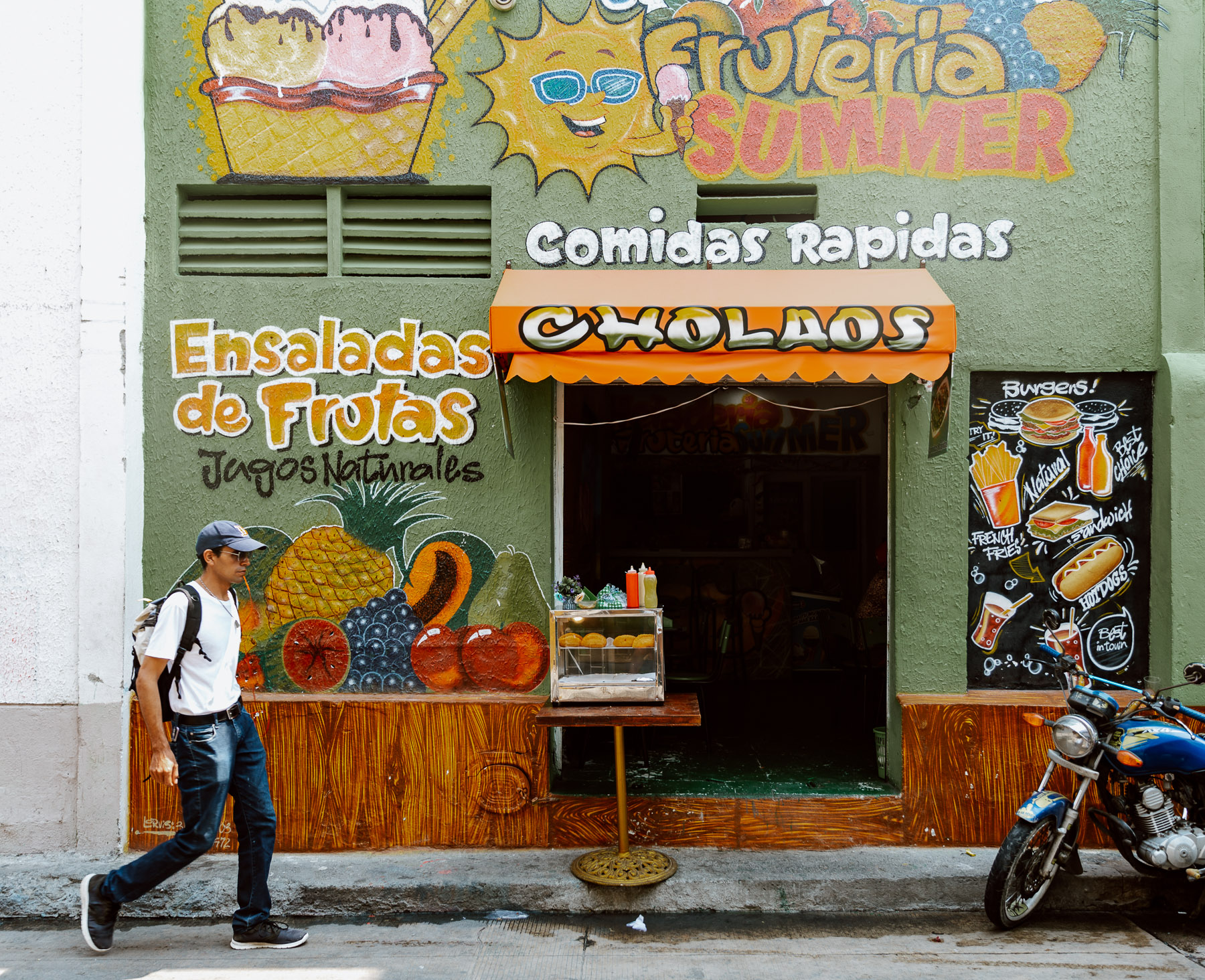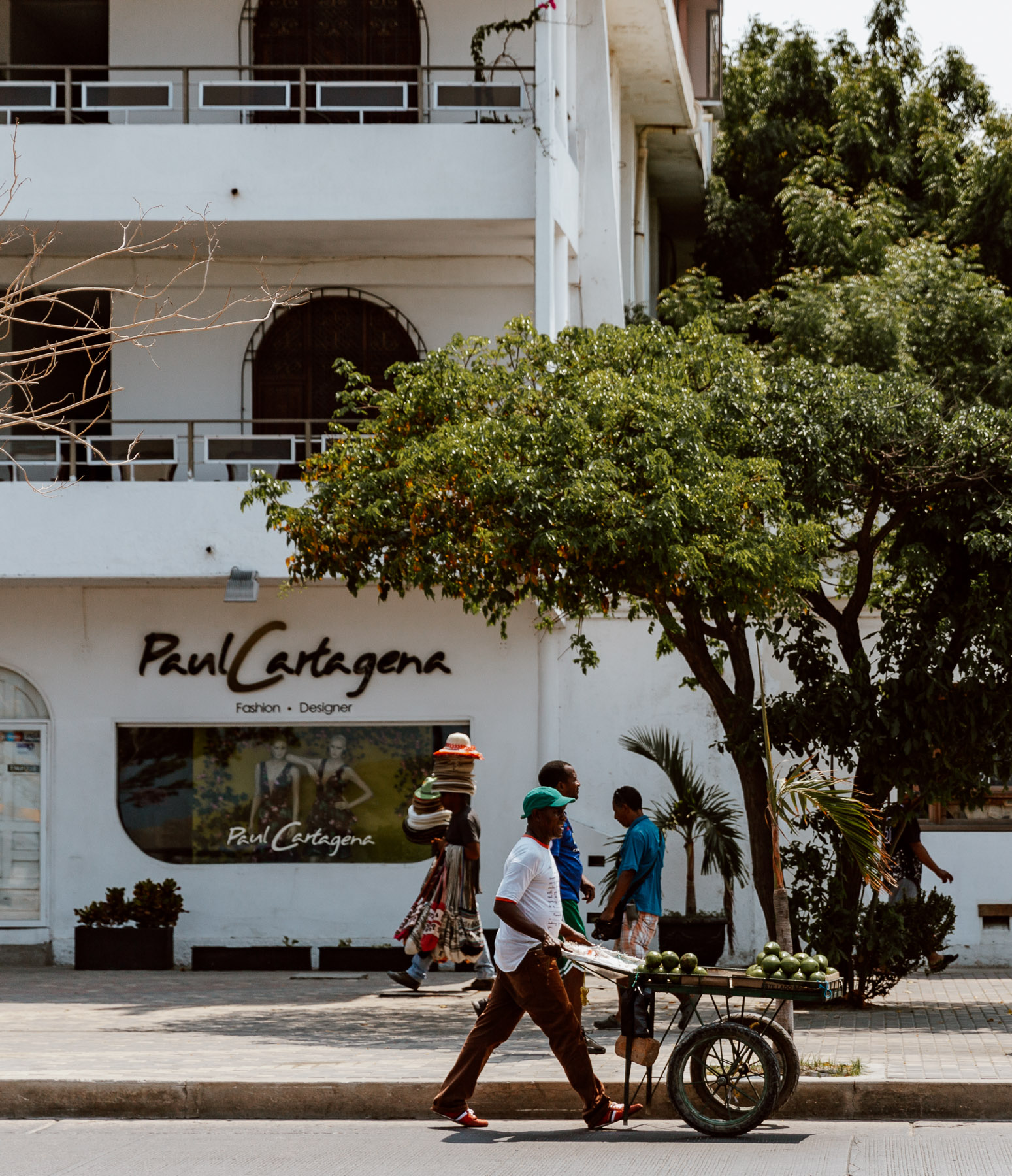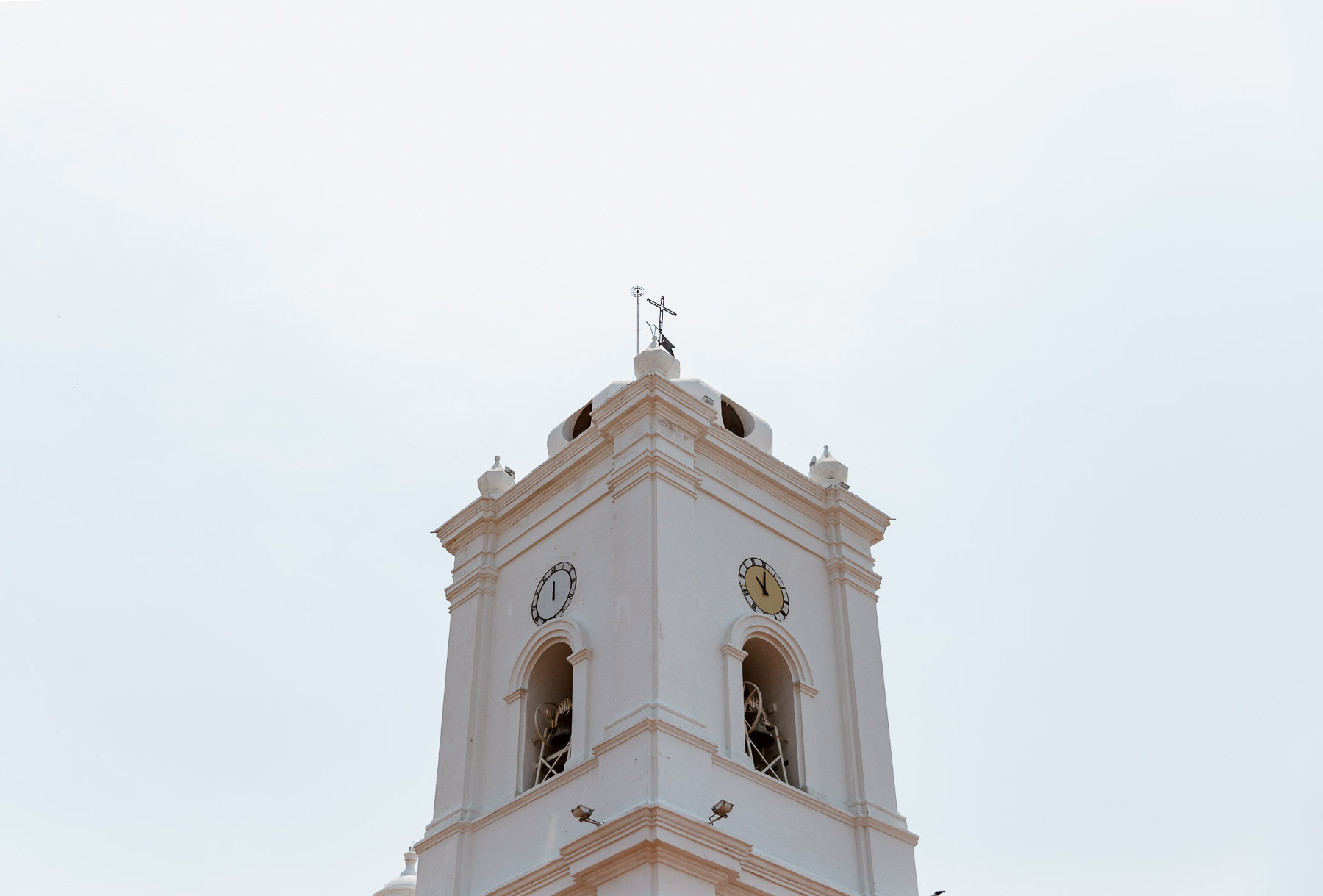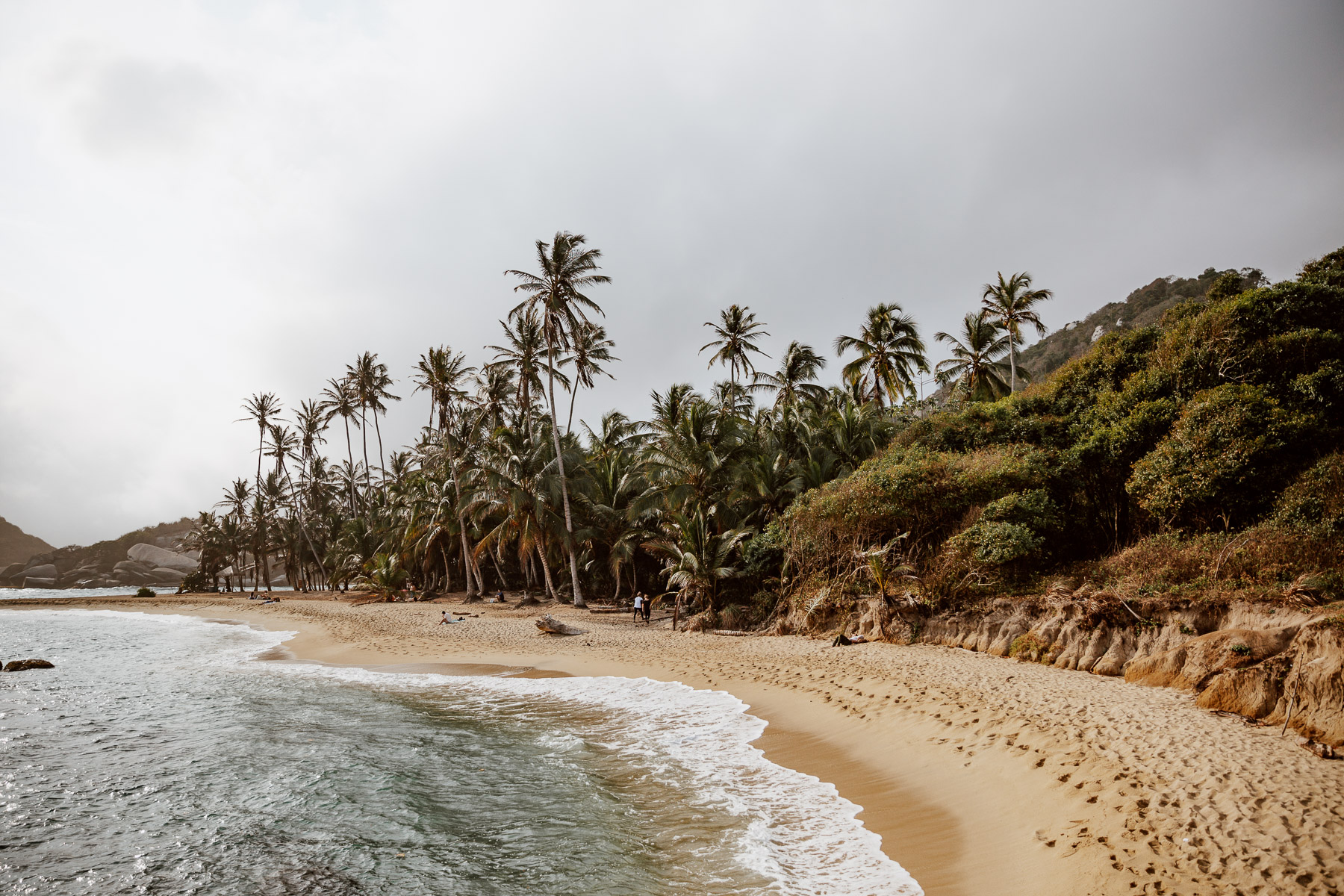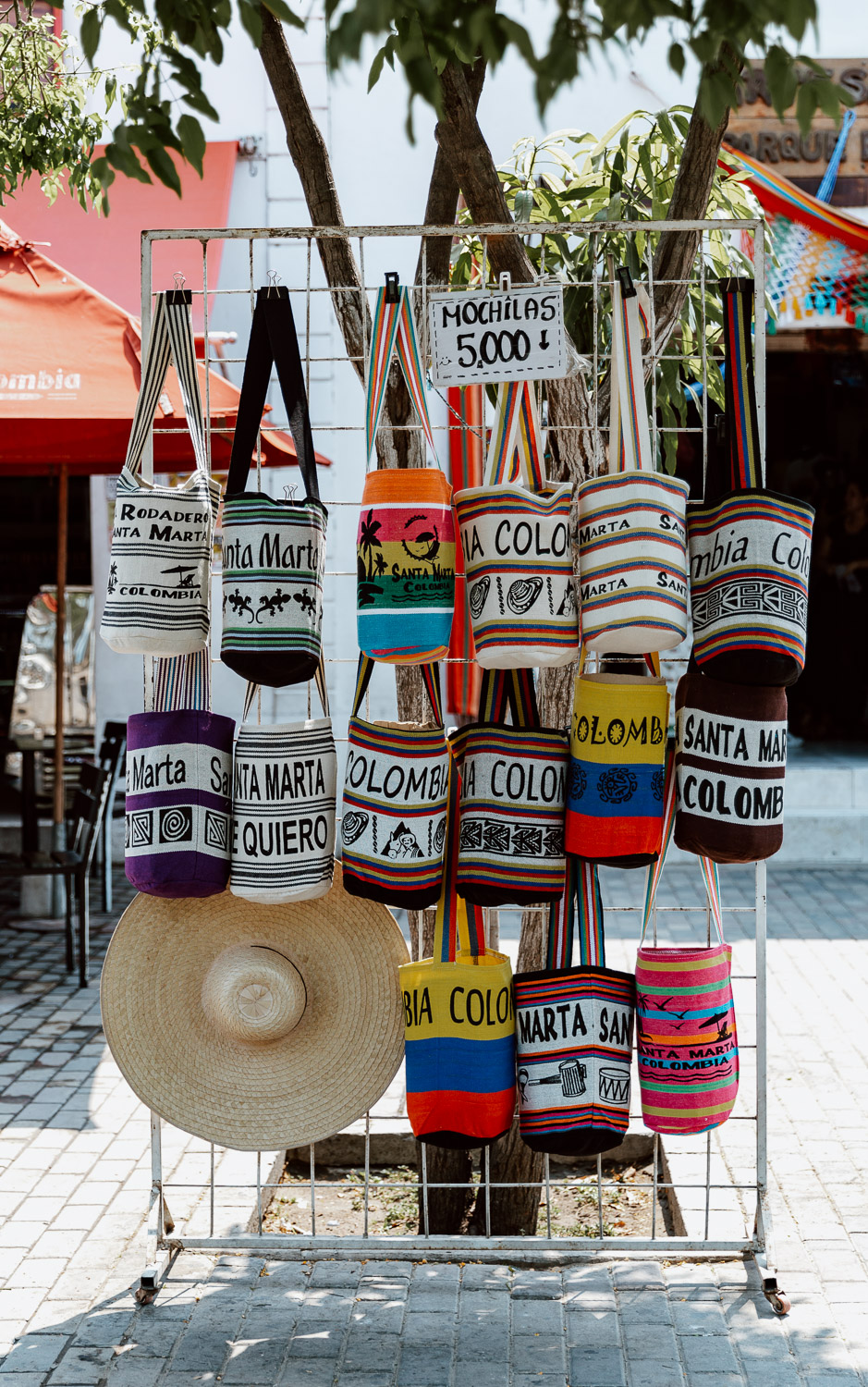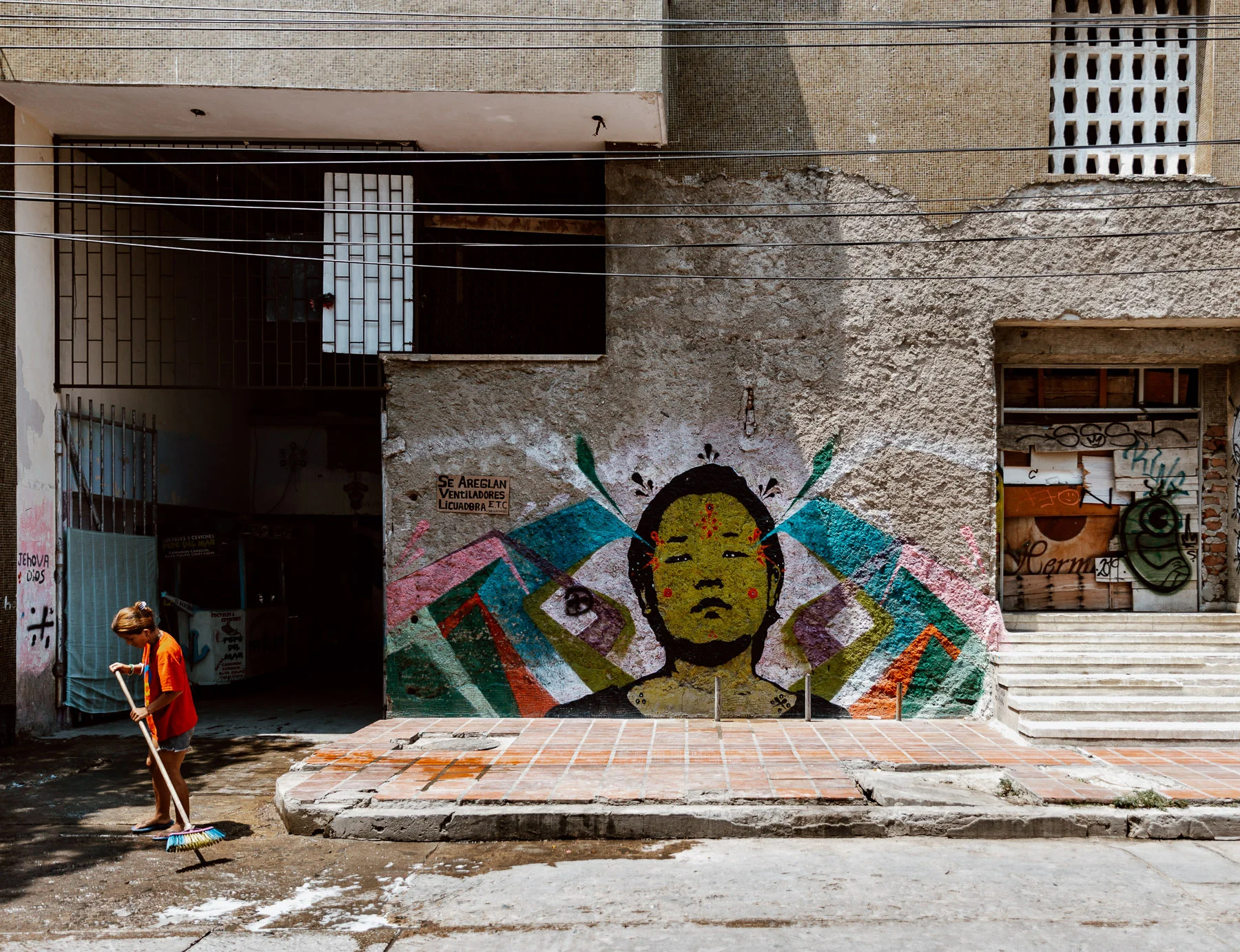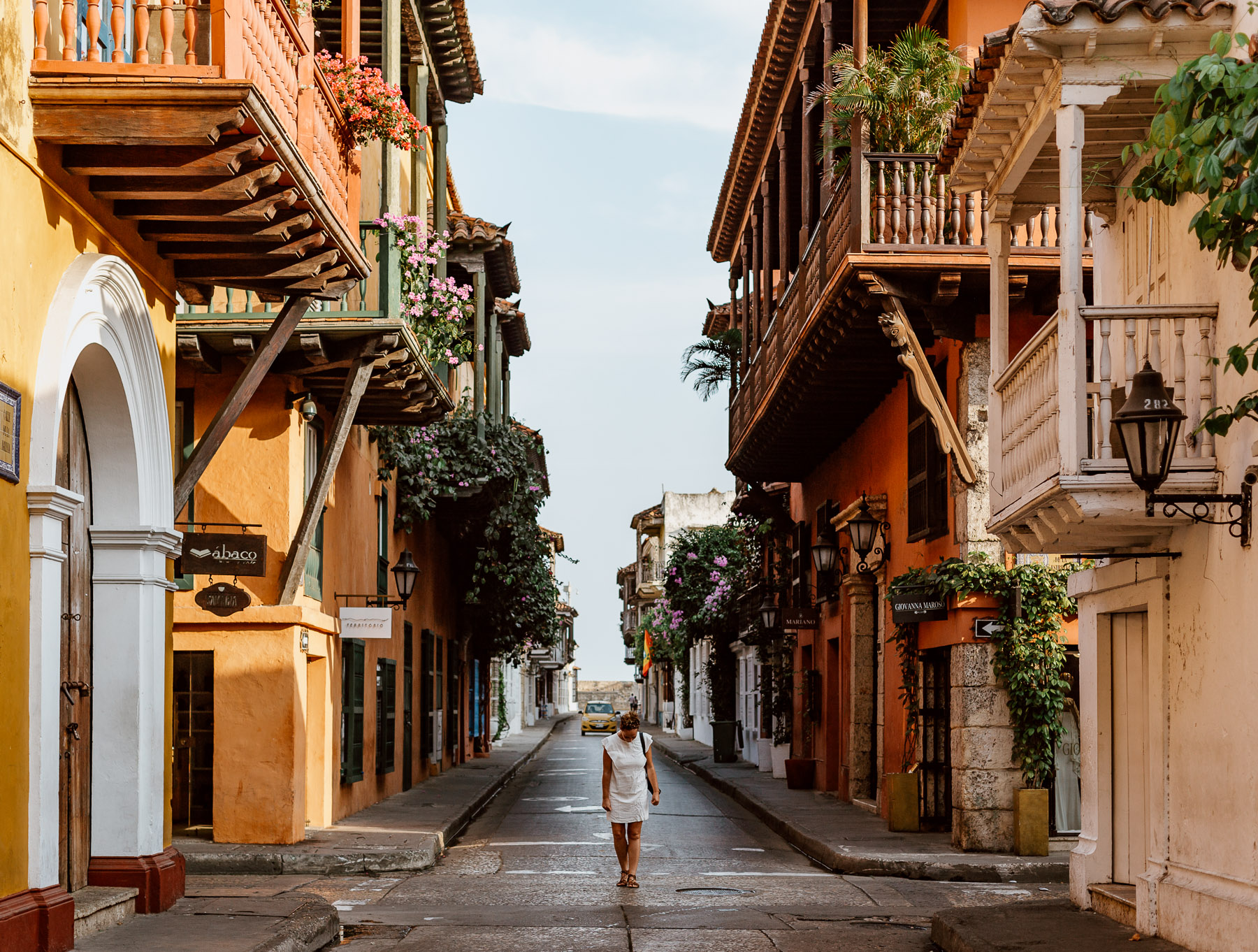The chances are, most of you won’t actually like Santa Marta very much.
Yet, as you make your way toward and along the north of Colombia, it is almost inevitable that you will spend at least one night here. After all, it’s from this gritty coastal city that travellers access the stunning beaches of Tayrona National Park, the natural paradise of Minca, the chilled backpacker vibes of Palomino, off-the-beaten track adventures in Cabo de la Vela, or to trek towards the Lost City.
In our two visits over the course of three years, quite a lot has changed here. Driven by the increasing numbers of tourists in Colombia, there are new businesses, a bit of much-needed gentrification, , and splashes of renovation around the city centre.
However, against this largely positive backdrop, Santa Marta retains a lot of the grit, the seediness, and characters that may have you double-checking whether you really should be wandering around with that much cash in your pocket or consider heading back to your hostel soon after darkness falls.
As all of Cartagena’s old town neighbourhoods now face becoming a little too touristy - feeling a little too much like many other places in the world - it’s important to recognise that Santa Marta actually offers a bit more insight and eye-openers to the curious traveller in Colombia than its sister city four hours down the road.
This is a good thing.
And over the course of our eight days there over two trips, as we got to grips with its hustlers and its bustle, we actually developed quite a soft spot for the city which has its heart on its sleeve, a lot of good people, and a lot of spirit. As an upside, it’s also home to a lot of really fantastic hostels - including one of the best in Colombia. So, you may not like Santa Marta too much or want to spend more than a night or two there - and that’s totally understandable - but it can certainly still have its moments if you go into it with eyes wide open.
Here are the best things to do in Santa Marta, including our advice on safety in the city, where to stay, why you shouldn’t get excited about its beach, and how best to travel onward to places like Tayrona, Minca, and the Lost City Trek.
The Best Things to do in Santa Marta
Not Go To The Beach
We are in a bunch of Facebook groups for travellers heading to Colombia, and somebody always mentions that Santa Marta has nice beaches.
It doesn’t.
We didn’t seek out its beaches on our first visit, and always regretted it a little bit.
We really shouldn’t have.
You can walk to Playa Los Cocos - the city beach - from the city centre in five or ten minutes, but it actually feels more depressing and unsafe than anything else. Honestly, don’t go out of your way to visit it.
A decent taxi ride away in the fancier part of the city - Rodadero - there are nicer stretches of beach, but most travellers aren’t going to go there in the day or two they have in Santa Marta (and there are much better beaches in this part of Colombia, including in Tayrona and the village of Palomino).
Walk The Malecon
The newly renovated malecón de Bastidas is worth a walk on sunny morning or late afternoon. Although there’s an industrial backdrop in one direction, there’s a little slice of beach filled with families and young couples, and the walkway is has street food vendors, people selling drinks, and a lively local vibe.
Just don’t walk it too late at night.
Visit Museo del Oro Tairona
This relatively new cultural addition to Santa Marta exceeded our expectations, and it’s definitely something you should visit whilst in the city (no excuses either as it’s free entry).
Set in an old building which used to act as the customs house in the colonial era, the Tayrona Gold Museum charts the history of Santa Marta, details the lives and customs of the four indigenous groups of the region, the cultural roots of northern Colombia, and details the huge ecological importance of the Sierra Nevada de Santa Marta. There are lots of museums in South America which focus on similar types of themes, but this compact one is actually really well curated and laid out rather than offering just a few dusty displays and old explanations. All displays have English descriptions.
A must-visit.
Where | Carrera 2 Parque Simón Bolívar
When | Tuesday to Saturday 9 a.m. to 5 p.m, Sundays and Public Holidays 10 a.m. to 3 p.m. Closed on Mondays
Alternative | We have unfortunately never made it out to Quinta de San Pedro Alejandrino, the old hacienda where South America’s liberation hero Simón Bolívar spent his final days battling against tuberculosis. It’s a 20 minute bus ride from the centre, and Atlas Obscura has a good short article about why it’s understandably such an important site for South Americans.
Prepare for the Lost City Trek
Colombia is not renowned as a hiking destination (especially as many other South American countries offer so many phenomenal outdoors opportunities). But the Lost City Trek is slowly establishing itself as a landmark experience in the region.
Trekking through the tropical humid jungle of the Sierra Nevada de Santa Marta for four or five days, sleeping in basic accommodation, and carrying (nearly) everything you need on your back isn’t going to appeal to everyone or be possible on short Colombia trips, but it’s exactly the sort of experience and challenge which curious travellers crave.
It’s only possible with an approved tour company, and tours all depart from Santa Marta. You can either book ahead of your visit, or look around your options when you arrive at various agencies and hostels. We did this Lost City tour with G Adventures which involves an exclusive fifth day route and is led by a fantastic indigenous guide.
So, if you’re hoping to do the Lost City, you will need a minimum of one night in Santa Marta before the trek starts and then will also need one recovery day when you come return (trust us, you will absolutely stink and will want to devour a pizza, burger, or bowl of pasta).
Read Next | Find out the essentials to understand and prepare with our Lost City Trek guide.
Coffee + Great Food in Ikaro Cafe
If you are choosing to just have a bit more of a lazy laptop or planning day in Santa Marta, then heading to Ikaro Cafe is a great shout. It’s a bit of a gringo haven hangout, but that is totally understandable due to its cool space, great coffee, and fantastic vegetarian + vegan menu which offers a nice change from traditional Colombian fare.
In the heart of historic Santa Marta (Calle 19 #3-60), their coffee is produced on their own farm located in the Sierra Nevada de Santa Marta and roasted in the coffee shop.
Calle 19 overall has a bunch of places to go eat and drink too, including Carambolo which is a good Mediterranean fusion place (with great veggie options) and Buon Gelato for ice-creams!
Tip | If you see a man making stuffed arepas over a barbecue on wheels in the street at night, then you must simply buy one. Arepas are the go-to Colombian corn bread which Emily is addicted to, and his were some of the best we tried in the country.
Travel to Minca
Minca is a little slice of heaven on earth.
Although it’s becoming more and more popular each day, it remains somewhere to get away from urban stresses and streets for a few days of nature trails, waterfall swims, coffee farm visits, stunning rainforest views, and peaceful relaxation in some of the best hostels in Colombia (like Casa Loma).
And the best way to get there on your own is via Santa Marta.
It’s simple enough, with shared taxis and colectivos leaving regularly from Carrera 9, between Calle 11 and 12, near the Mercado Publico - look for the Cootrasminca office / sign. Journeys take 45 minutes, and cost 8,000 COP per person.
Read Next | Find out all our favourite things to do in Minca.
Explore Its Colourful Colonial Streets
Unsurprisingly for one of the oldest cities in the continental Western Hemisphere - founded in July 29 1525 - there are many historic buildings and streets dotted around the centre of Santa Marta (pirates through the centuries did however destroy lots).
Although they aren’t nearly as photogenic as those you’ll find in Cartagena, wedded with the day-to-day street scenes which unfold across the city, you’ll not want for something that catches your eye.
Tip | Also go to Callejon San Francisco and the whitewashed Cathedral Basilica de Santa Marta, and the streets around them. For a contrast and insight into the hustle and bustle of Colombia, take a walk down the busy commercial street Carrera 5.
A Pizza in Parque de los Novios
We only ate here because our Lost City group wanted to indulge in something amazing on our last night together. This is how we ended up having pizza, local craft beers, and cocktails Ouzo - somewhere that would usually have been out of our sometimes too stingy travel budget.
By my god that pizza was fantastic. In many many places in South America, we have compared getting a pizza to a game of Russian Roulette as you never know what’s actually going to arrive.
However this one was legit delicious, and the restaurant is pretty cool.
Parque de los Novios is also a very popular and social area in the evenings, particularly at weekends, amongst locals and visitors. There’s a few more restaurants and bars too, but they’re all definitely best saved for the evening where you’re happy to spend a little more rather than sit on plastic chairs at plastic tables sipping cold bottles of Aguila. In general, Santa Marta has a pretty lively nightlife scene, and this is the epicentre.
Tip | We actually went to a little local’s bar /restaurant on the corner of Calle 20 and Carrera 1C a couple at times for drinks in the evenings, which had cheap beers, a great atmosphere, and plastic chairs at plastic tables and cold bottles of Aguila.
Read Later | 21 Things To Know Before You Visit Cartagena
Take A Trip To Tayrona
The most famous beaches in Colombia are found in Tayrona National Park, and Santa Marta is the most popular jumping off point for daytrippers and those planning a few nights in the hammocks.
We have shared everything you need to know about how to plan your trip to Tayrona, plus how to get there from Santa Marta in our Tayrona National Park guide.
Tip | Taganga is a 15 minute drive away from Santa Marta. However, this former fishing village has developed a bad reputation for all the worst bits associated with an increase in backpackers. Lots of parties, lots of drugs, lots of thefts. It is supposedly still decent and very cheap for diving, but we had zero desire to visit.
Where To Stay in Santa Marta
Due to its strategic location, the hostel scene in Santa Marta is actually pretty great, much cheaper than Cartagena, and a bunch of them have pools too. However, several of the best options are not within the historic city centre so require a 7,000 COP (£1.6 / $2.1) taxi ride or walk in for onward connections.
If you’re on a really tight budget, then you’ll have no problems finding a cheaper local guesthouse when you arrive, but we would strongly recommend against turning up in Santa Marta at night without a reservation and wandering around with your backpacks on.
Here’s our personal selection of the best hostels in Santa Marta:
La Guaca Hostel | We spent a couple of nights here before the Lost City Trek, mainly because it was the only hostel we could find in Santa Marta which offered security lockers for trekkers storing their bags, rather than just a free luggage storage room. As we travel with a lot of tech, this was important for us. The hostel itself was however a great find - based outside the city centre, it’s got a massive kitchen. good free breakfast, lots of social areas, a small pool, and lovely multilingual staff. Check prices and availability on Hostelworld or Booking.com
Masaya | Based in the historic centre, Masaya’s rooftop social area is phenomenal and the whole place is full of great little design touches. In fact, it’s more like a boutique hotel experience at hostel prices. Based in the historic centre. Check availability on Hostelworld or Booking.
The Dreamer Hostel | Voted best hostel in Colombia several times, The Dreamer continues to be an incredibly popular option with backpackers. It’s got a big pool, loads of social areas, guest kitchen, and even complimentary Spanish lessons. It’s a couple of kilometres outside downtown. Check prices and availability.
El Hostal de Jackie | It’s got a pool, a great roof terrace, a guest kitchen, free breakfast, and is slap bang in the city centre. Check availability on Hostelworld and Booking.com
If you’d prefer to stay at a hotel in Santa Marta, then you can find and overview and make a booking here.
Santa Marta Safety
We’ve mentioned a few times that Santa Marta does feel a little…sketchy…in parts. We’ve travelled extensively in Colombia - and it’s our favourite country in South America - but this city is the only place (except for certain parts of Bogota) where we have definitely been a little more cautious. Many other people pick up the same vibe in Santa Marta, and speaking with various Colombians on the road, it isn’t necessarily an unjustified feeling.
Now, this isn’t to make your paranoid, but to rather just prepare you. Nothing bad has happened to us in Santa Marta (and it likely won’t happen to you either), but please do just exercise caution. The city has a vibrant social scene at night, but it definitely also has a seedy undertone too, so don’t be out and about with all your valuables or think that walking the backstreets back to your hostel is the best option.
The city has also become a hub for a large number of the Venezuelan refugees who have entered Colombia in the last few years, and you will be asked for money several times a day.
As ever, just ask at your hostel if there are any areas to avoid.
How To Get To Santa Marta
Santa Marta’s bus terminal is outside the historic centre, and this is where most travellers arriving from Cartagena and Barranquilla will arrive. It’s 10-minute, 7,000 COP taxi ride from there into the city centre. Don’t try and walk this.
Santa Marta also has an airport. It’s primarily a hub for national flights to Bogota and Medellin, but it will soon have direct flights arriving from the US. You can take the Aeropuerto Rodadero bus to the city centre for 2,000 COP (£0.5 / $0.6) and 45 minutes, or a taxi to your hostel should cost 25,000 - 30,000 COP (£6-7 / $7.5-9).
Cartagena to Santa Marta
Most travellers coming to Santa Marta will be arriving directly from Cartagena, and there are regular buses running between the two cities. Journey time is 5-6 hours and you have three options depending on your budget - we have detailed them all in our How To Get From Cartagena to Santa Marta by Bus post.
Tip | If you’re visiting Cartagena, then make sure to read our Cartagena city guide too.
Bogota to Santa Marta
It’s a 90 minute flight or an overnight 15 hour night bus - take your pick.
Medellin to Santa Marta
It’s a flight of just over 1 hour, or a 16 hour night bus - take your pick.
Palomino to Santa Marta
Regular buses go along the arterial high way which runs along the coast. Travel time is 2 hours with buses departing every 15-30 minutes. A ticket costs 10,000 COP. Read our guide to Palomino to find out the best things to do and the best hostels for backpackers.

